
Now that our team isn’t working in the same office anymore, the things we used to say to each other in the hall – a simple “hello” in the mornings or a smile at someone as we walked by their desk – are absent. Gone are post-lunch catch-ups over coffee or asking about how a co-worker’s weekend was when we go to fill up our water bottle.
So what do we do? How do we bring back trust and cohesiveness in the team? Games and activities are charming, sure. But does it truly help build trust in a remote team? We have to dig deeper for more meaningful and more sustainable ways of building trust in a remote team.
What is a Virtual Team
“Virtual team” is an odd phrase. It sounds like something that only exists in a digital alternate reality. But virtual teams are very much a reality, and they’re becoming more prevalent with each passing day. A virtual team is no longer an outlier. Organizations have realized the benefit of using technology to look beyond their local community for talent. It’s almost become the norm—and of course, the whole virtual trend has been boosted by the recent pandemic. Regardless, it’s clear that virtual teams are here to stay. The first, and perhaps the highest, is understanding what virtual teams are and why they’ve gained such popularity so quickly.
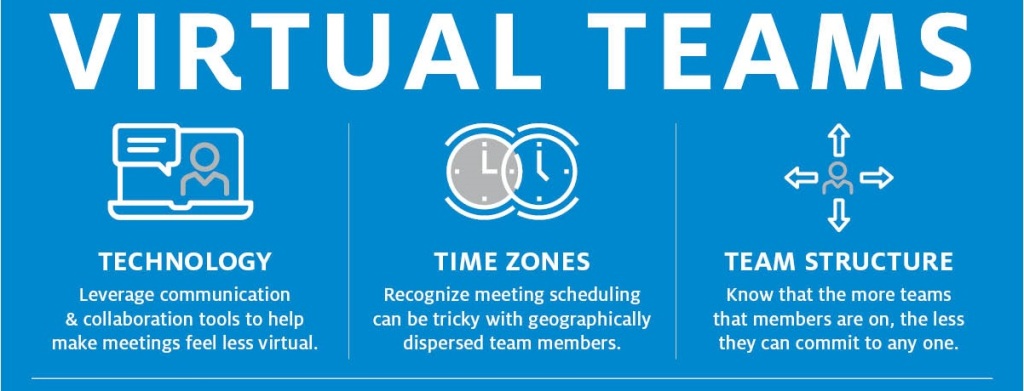
A virtual team (also known as a geographically dispersed team, distributed team, or remote team) can also refer to groups or teams that work together asynchronously or across organizational levels. Powell, Piccoli and Ives (2004) define virtual teams as “groups of geographically, organizationally and/or time dispersed workers brought together by information and telecommunication technologies to accomplish one or more organizational tasks. Virtual teams can be defined as “small temporary groups of geographically, organizationally and/or time dispersed knowledge workers who coordinate their work predominantly with electronic information and communication technologies in order to accomplish one or more organization tasks.”
What Is Virtual Team Building
One of the biggest misconceptions about virtual team building is that it’s only about helping our team “feel good.” Warm and fuzzy sentiments about each other on the team is unquestionable pleasant – but that does not mean we should optimize for them in a team. When a team is constantly looking to “feel good,” they end up flattering each other while avoiding to speak the truth. Conflict is brushed under the rug. Preserving face is valued over honesty and mutual accountability. The team’s culture – and performance – will suffer, as a result.
Rather, to get virtual team building right, we will want to focus on fostering trust in a remote team. Trust, after all, has enormous benefits to a team’s culture and performance that we often don’t fully recognize. Studies have found how trust is linked to improving job performance, increasing employee engagement, and opening up channels of communication. Trust is the oil in the engine that helps any team (remote or co-located) get to where it’s trying to go.
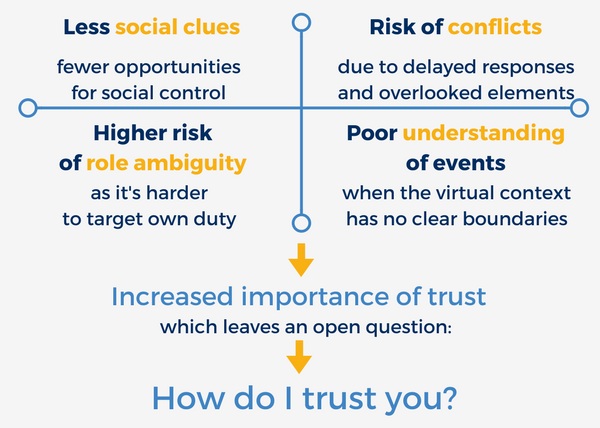
But trust can be a blanket word. Something we casually toss around, without precision. When we aspire to build trust, we can lose our sense of what that means to begin with.
To do virtual team building right, we must then distill specifically the type – or types – of trust we should be looking to cultivate.
What Exactly Is Trust?
Interpersonal trust and psychological safety can be conceptualized as mirror images of social interactions associated with individual, team, and organizational behaviour. Is it possible that when we interact with others and perceive that they’re capable, caring, ethical, and predictably consistent in their behaviour that some type of “switch” in the brain turns on to signify we should trust them and feel safe with others?
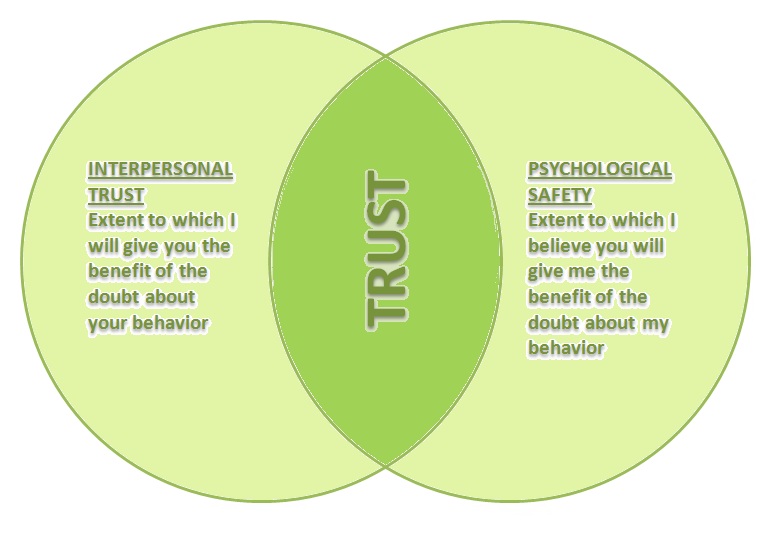
The Two Kinds of Trust That Come into Play
Virtual happy hours and team-building games at your monthly all-hands meetings are always fun and entertaining—but a monthly virtual gathering isn’t enough for building tight-knit relationships. Because social connection is about building trust, specifically two kinds:
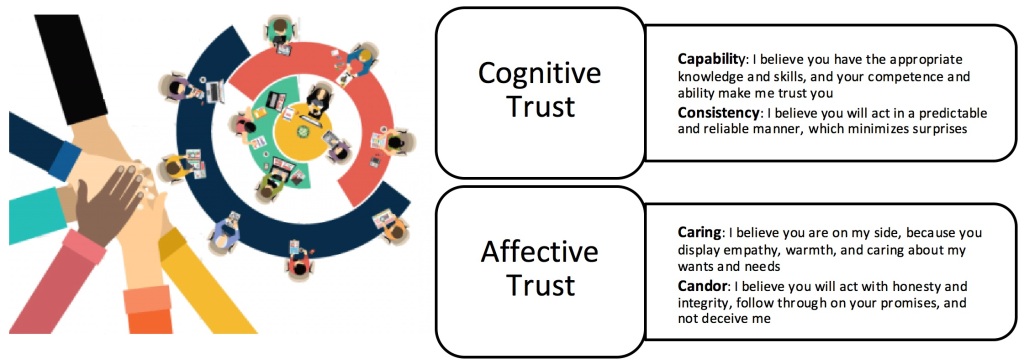
Affective Trust
Affective trust is one type of trust that we really rely on as a team to be effective. It’s the kind of trust that is based on the feeling we have about someone that’s positive. It’s enormously important in a remote team because we don’t get that as much. In a remote setting, we often over-invest in excelling at our job and performing well (cognitive trust) vs. getting to know our colleagues (affective trust). Affective trust is needed most in the beginning of a new relationship.
The days of sharing our weekend plans in the break room or getting after-work drinks might not be as doable as they used to be, but we should still create space in our virtual work day to spark those conversations whether it’s through a Slack DM or a virtual coffee chat. Establishing a buddy system to help new hires get to know their teammates (and vice versa), or creating dedicated non-work channels in Slack or Teams for people to socialize (e.g. a pets channel for folks to share stories and photos about their furry family members) are also worth trying.
Cognitive Trust
Cognitive trust is our belief in someone’s dependability and reliability. We build cognitive trust through our actions. It’s our ability to follow through on our word, show humility, and do what’s best for our team. To gauge how well we are building cognitive trust, we may ask ourselves:
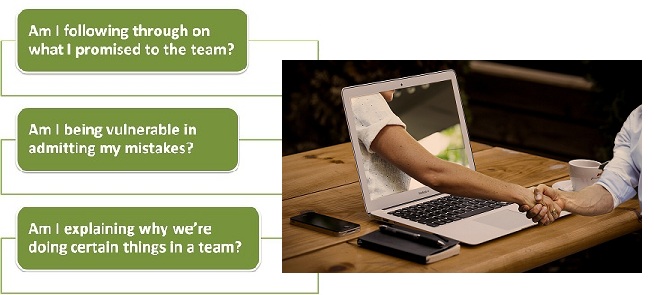
Each time we show our competence, it’s like we are making little deposits in our team’s cognitive trust bank.
Bottom line: We need both affective and cognitive trust to cultivate connection.
***To be continued in Chapter 02 (Building of Affective Trust & Cognitive Trust in Remote Teams, Psychological Safety in Teams, Its Importance) Link to Chapter -02:
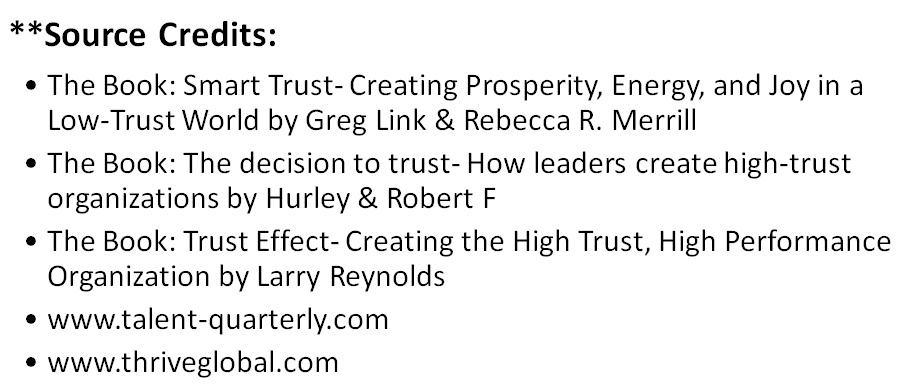
Content Curated By: Dr Shoury Kuttappa


One reply on “BUILDING TRUST IN VIRTUAL/ REMOTE TEAMS: BEHAVIORS ASSOCIATED- Chapter 01”
[…] BUILDING TRUST IN VIRTUAL/ REMOTE TEAMS: BEHAVIORS ASSOCIATED- Chapter 01 […]
LikeLike